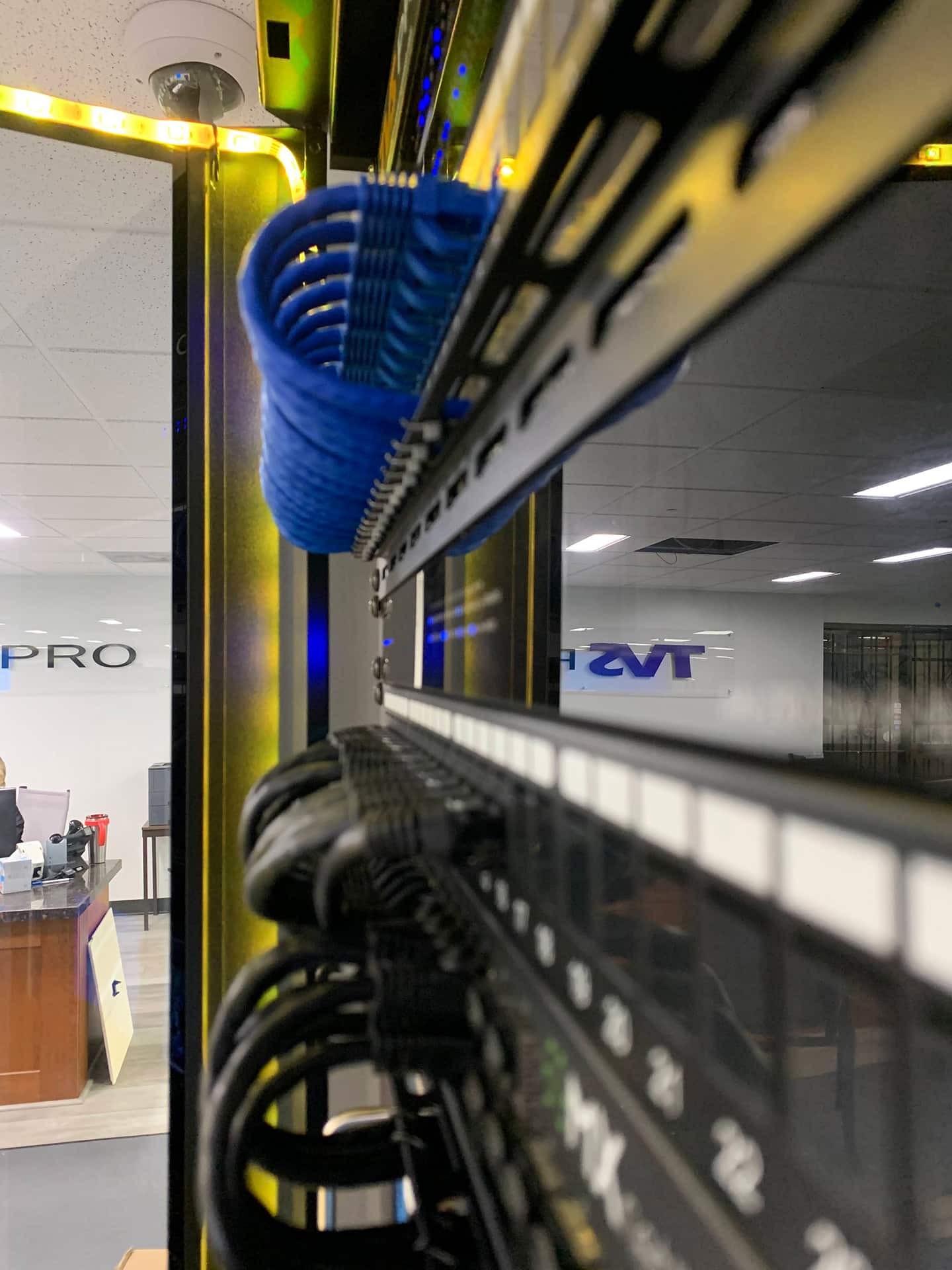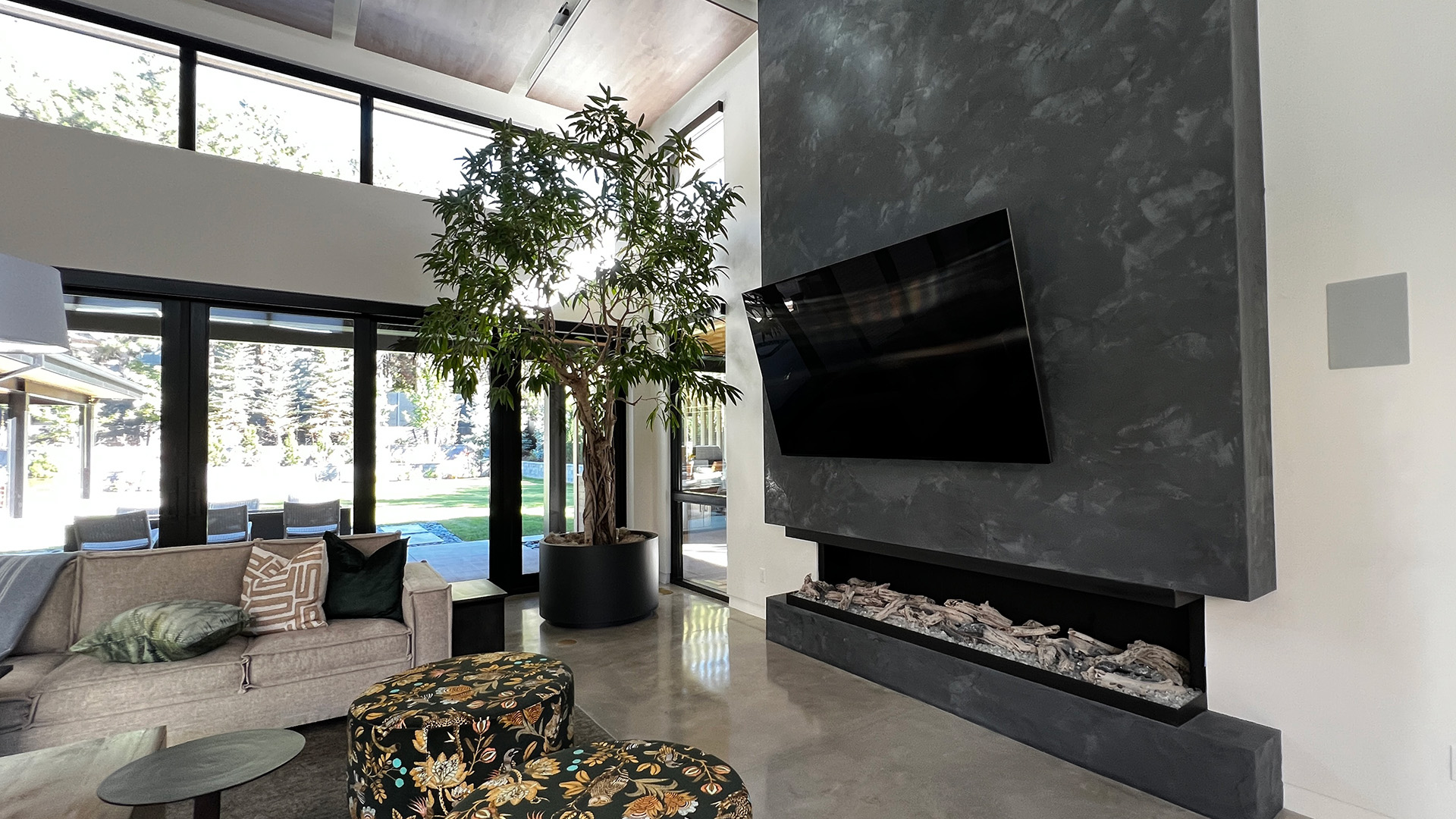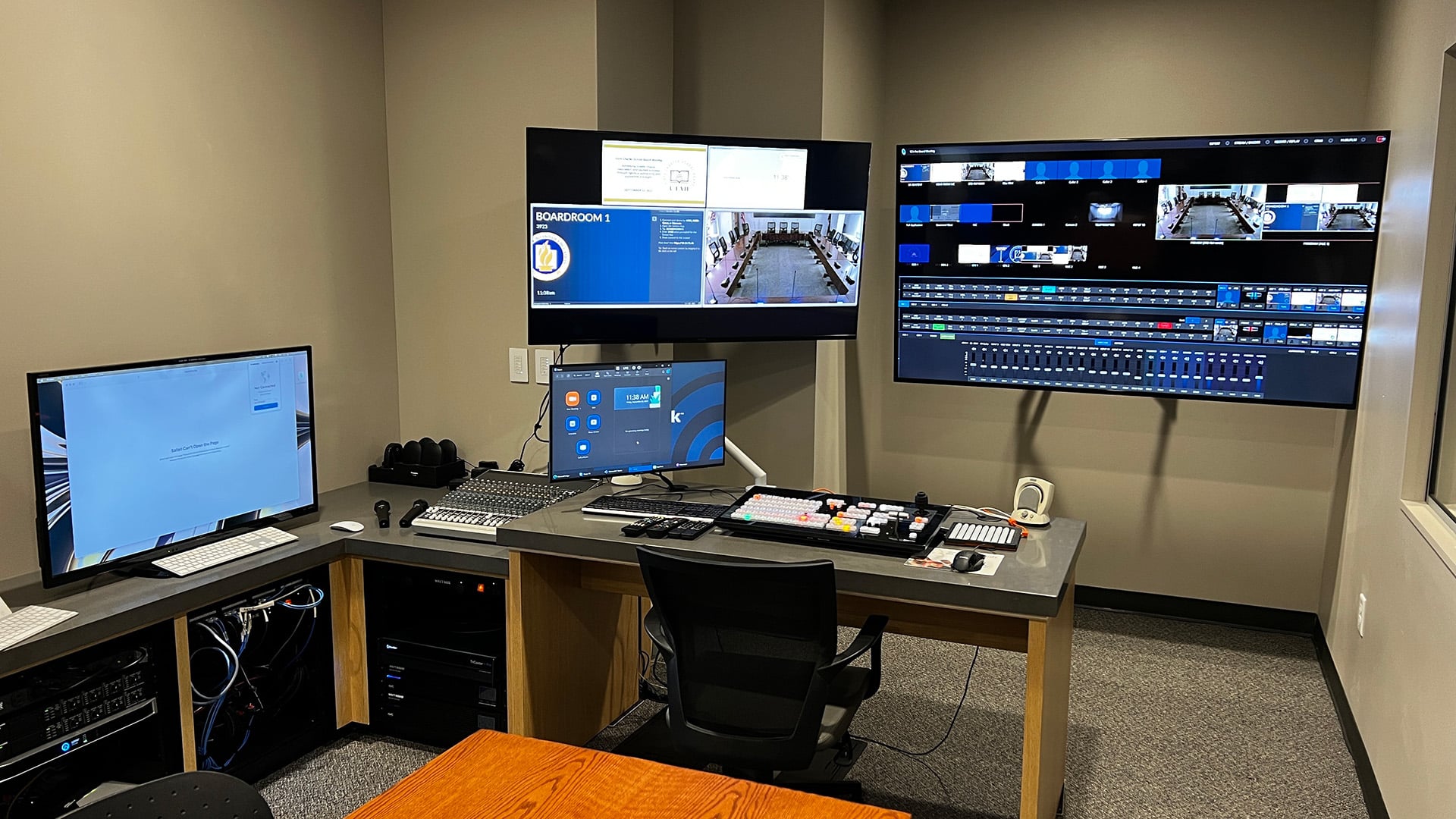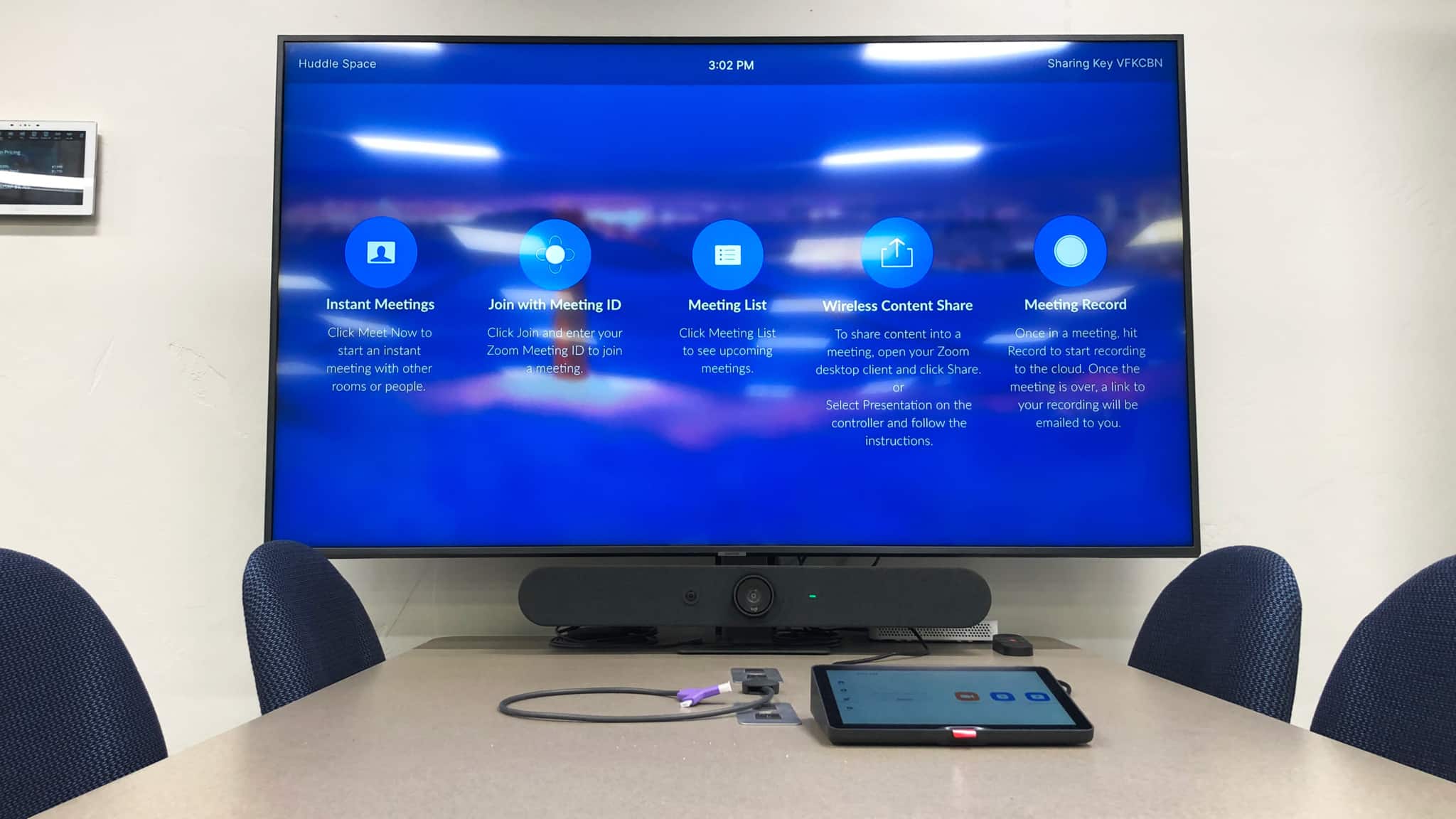Many have heard phrases such as digital transformation or convergence of AV and IT in the past few years. You might be thinking, what does that actually mean? No matter which term you might be most familiar with, the sentiment is the same, that the AV industry is in the midst of a dramatic shift. Historically, there have been shifts of this size – such as the switch from analog to digital in media storage, over the air broadcast, telephone communication, and, of course, audio video signals.
When you hear the term digital transformation, many people apply their own definition of their journey transforming some practice to a more digital approach. That is what I would like to focus on in this blog, how the convergence of AV and IT has continued to evolve, and the crossroads we are facing with using AV over IP versus traditional AV infrastructure.
Defining terminology
Before we dive right in, let me take just a moment to define some terminology. Here are a couple definitions of standard AV distribution systems:
Fixed architecture – Audio visual components that are generally constrained to a fixed number of inputs or outputs.
AV over IP – Audio video components that encode, transmit, switch, and distribute signals over standard network infrastructure.
Tech tip:
AV over IP is not one size fits all! Some network solutions use standards-based methods of transmission. This transmission utilizes a codec (signal compression/decompression) which prepares and sends the video signal from one location to another. While some hardware uses proprietary codecs that keep the signal secure, and require the use of specific hardware for viewing, other hardware uses open source, standard codecs that are widely available.
Common acronyms
AV over IP or AVoIP – Audio Visual over Internet Protocol. The transmission of audio visual signals over standard, off the shelf, networking products.
AI – Artificial Intelligence. The use of automated programs and or processes to provide specific functions or features.
IoT – Internet of Things. Any small, network connected, device that reports or shares its data with other devices or systems.
AR/VR – alternate reality/virtual reality. AR is an augmented view of our physical world with visual overlays; while virtual reality is a complete, virtually rendered environment.
Software defined – specific functions or features that are dynamically configured, and programmatically efficient to improve performance and monitoring.
Hardware defined – functions or features that require purpose built hardware to perform a specific operation.
Convergence of AV and IT
As I’ve already mentioned, one of the most recent times the AV industry has gone through such a dramatic shift, was the switch from analog to digital. This shift caused a widespread effort of replacing outdated, analog technology with more current digital models and it affected everything. Tube TV’s and rear projection systems were replaced with sleek flat panel displays, telephone systems moved from analog to Voice over IP, security systems moved from physically cut keys to digital card readers, and the list goes on and on.
We migrated to a world where the digital counterparts offered so much more than the original analog systems could provide. Digital phone systems offer features such as scalability, system status, usage and analytics, that are in the hands of the business or enterprise to see live dashboards in a central management system that analog systems weren’t built to offer.
Digital displays offer more clarity and visual performance that are being utilized in various ways to display things such as: presentations, video conferencing, business metrics, KPIs, network and security operations. As the use cases continue to evolve, they too need to be managed.
It is not uncommon to have multiple AV systems at one location. These systems provide classrooms and training rooms, board rooms, conference and huddle rooms, digital signage, operations centers, and more. With the migration of AV to IT, we can now connect these previously independent systems to provide the same experience of centrally managing and monitoring all of these devices.

Traditional versus networked AV
Let’s take a look now at the two primary types of AV systems that we see today which are traditional fixed architecture systems and AV over IP. Fixed architecture systems can offer great solutions from small and medium spaces like huddle rooms or conference rooms, up to large complex spaces that can have several displays or room partitions to provide divided rooms. These systems can easily be designed to fit project requirements to ensure there are sufficient source and destination endpoints, as well as some flexibility and room for expansion. However, these components are generally built in tiers that offer a fixed number of endpoints. For example, video matrix switchers – that offer multiple input signals to be routed to multiple outputs simultaneously, are built in specific configurations. The most common configurations are offered in a variety of inputs and outputs such as 4, 8, or 16. So if you required 5 inputs and 6 outputs, you could choose to utilize a matrix with an “8 by 8” configuration that would allow 3 additional inputs and 2 additional outputs for future expansion.
These fixed systems are a great value when properly designed for their specific needs, and lock in your investment for the initially designed application. If your system expands beyond its physical limitations, a re-investment of infrastructure would be required to meet the new needs of the system – which could be costly. The alternative is to plan for all future expansion, and risk over engineering a system that may never be fully utilized.
Now, let’s transition to an AV over IP system. At the core of any networked audio video system is the network switch. The size of the network switch depends on the required port count based on the system design and how many total devices – along with video and audio endpoints, are required. After determining the total number of devices in your system, selecting the appropriately sized network switch, and allowing enough available ports for future expansion, your system is ready to deploy.
Networked AV systems are far easier to expand or augment in the future by sizing up your core network switch, or adding additional network switches where needed. By utilizing a standard infrastructure, it nearly eliminates the need to add expensive and proprietary signal transmitters and receivers, switchers, or even start a whole new design from the beginning, when adding – what seems like – a few additional devices or endpoints.
Infrastructure needs
The infrastructure requirements can differ depending on the type of audio video system you choose for your application and should be considered during your planning stages. Traditional audio video hardware will require dedicated cabling, specialized hardware components, and a local control system. This can result in cluttered installations along with higher installation and maintenance costs, as well as longer installation times.
In contrast, AV over IP infrastructure can leverage your existing network hardware to distribute audio, video, and control signals throughout your facility. AV over IP systems require robust and reliable network infrastructure to ensure that audio, video, and control signals are transmitted without latency or interference.
This may include the installation of additional network switches or routers to ensure that the system is properly configured and optimized. By leveraging standard Ethernet cables to distribute audio and video signals throughout the facility, results can be faster installation times, lower installation costs, and a more streamlined installation with fewer cables.
Scalability
It should come as no surprise that AV over IP systems offer a level of scalability that is much harder to achieve with fixed architecture equipment. You now have the ability to include several independent systems into a single, central system. You can include all of your displays – regardless of content, all of your video and audio sources, microphones, speakers, control interfaces, and many other devices into one system.
With all of your devices on the same connected system you have visibility to your entire system at your fingertips. You can easily check current device status, route video signals from anywhere to anywhere, and even start to leverage common equipment in multiple areas. Signage systems can all be set to display the same content source, previously independent rooms can be configured to extend content from other rooms, and you can even leverage central equipment such as conferencing or recording systems.
Functions that might have been too expensive for every space, can even be designed to benefit multiple spaces. Recording and capture systems can be costly for each individual space in your building. The same can be said for specialty video displays such as interactive flat panels, high brightness projectors, or even video walls. But if these solutions were made available for use in any space, and designed to be modular, you could move equipment around as needed – creating a scalable audio video environment that can be added to as needs evolve.
Flexibility
Both traditional and network based AV systems provide a level of flexibility, but the one that provides the most flexibility is networked AV. If you need to route video and audio signals to numerous end points, or over extreme distances, networked AV is fairly straightforward to provide a solution. All you need to do is verify the two systems can communicate over a network, and that there is sufficient bandwidth to achieve acceptable results.
Now this is an oversimplification, but the basis is, in fact, true. With traditional AV, this is still possible, but requires significantly more hardware to do so. More hardware means more cost, more configuration, and more connection points; which leads to more points of potential failure. Depending on what your current needs are, and the existing infrastructure, either solution may be viable. That is where an AV engineer can provide their expertise.
Another extremely beneficial feature of networked systems, is the ability to centrally deploy, configure, and manage connected components throughout your network. Additionally, you can remotely monitor most of these settings to reduce downtime and provide assistance virtually. So much of today’s equipment is connected to the network; and, having a virtual dashboard that can display the current status of equipment along with firmware versions, active configuration, and even usage, can help to ensure systems are remaining functional and essentially providing an adequate return on your investment.
Video conferencing is another key technology that provides additional flexibility by allowing for remote teams and individual participants to join in any conversation from anywhere in the world. For more information on video conferencing and how to properly budget for your video conferencing needs, take a look at our blog How Much Does a Video Conferencing System Cost?.
Another technology that is worth mentioning is Virtual Reality. It allows for increased engagement by putting the viewers in scenarios and situations that may be too costly, dangerous, or impossible to provide in person. Imagine the ability to train your employees in workplace safety with real scenarios that could cause serious injury – without any personal risk, or operating heavy machinery that could be costly if damaged or used improperly. Each one of these scenarios can be introduced without the need for expensive and dedicated equipment used for testing and training. Virtual Reality allows you to create an entire environment, with all the key elements you require, while avoiding unnecessary risk and expense.
Cost
When considering any upgrade, you should always analyze and consider all costs that will be included. In addition to the required hardware components that will be added to the system, there may be existing components that require upgrades or replacement to meet the new solution’s specifications.
AV over IP solutions can require larger upfront costs, subject to existing hardware and required features. One major reason for this is that the core components of the system – the network switches and routers, need to be robust enough to meet or exceed the bandwidth requirements of all video and audio and points. However, if you are deploying smaller, individual systems, your investment could be much less expensive than traditional AV equipment.
Lastly, you should consider the future cost to upkeep or expand your initially designed system. Management costs of centralized systems can be much less with an AV Over IP system. By providing centralized dashboards, usage reports, analytics, and even proactive outage reports – to name just a few features, you can take the task of testing each system out of your routine. You can also schedule and deploy firmware updates remotely with connected systems, removing the time to visit each room, physically, to update components and remain secure. When it comes time to add or expand to your system, AV over IP can also be less when adding a few simple end points to a larger distributed system. The core components remain intact, and you can simply add devices to the edge of your network to fulfill your new system demands.
Tech treat: Software is the new hardware. Technology is commonly being designed with growth in mind. Hardware is coming to market with “future features” on product roadmaps that allows the consumer to continue getting features with their initial investment of their products. Be careful though, don’t buy equipment just for future promises! Make sure your equipment will properly meet your needs from the beginning.
*Main image by rawpixel.com on Freepik






0 Comments